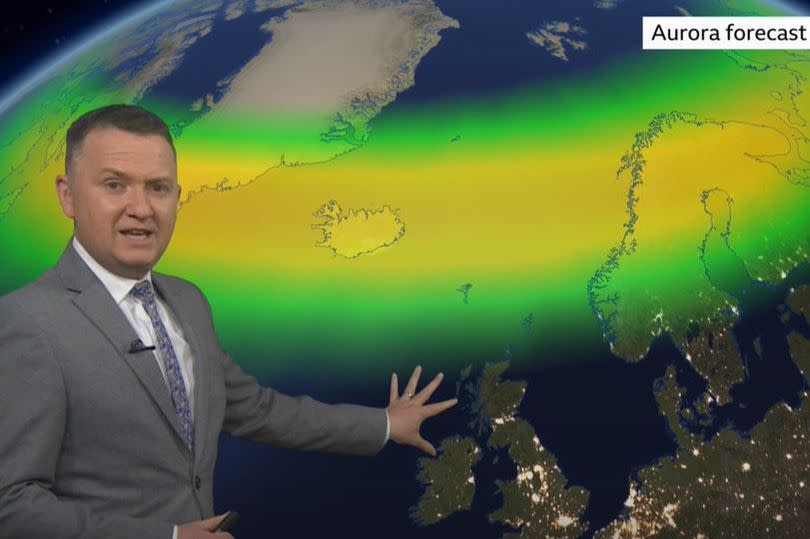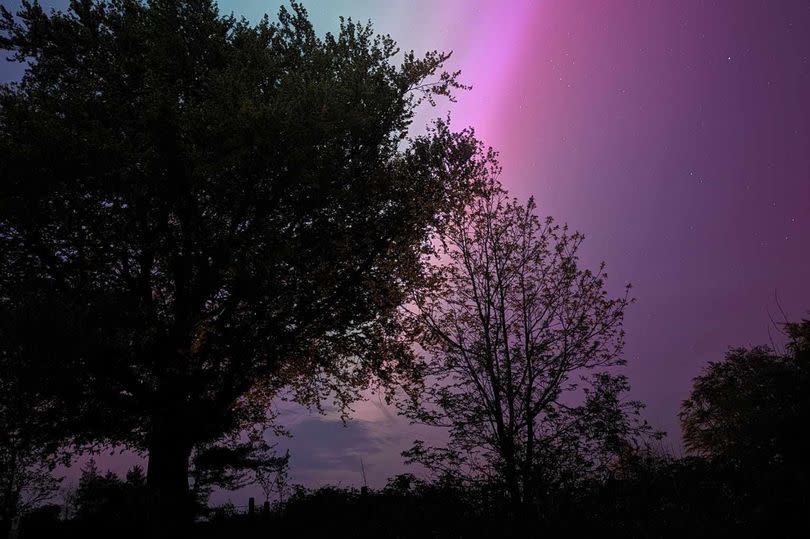Northern Lights: When and where you have a great chance of seeing the spectacular celestial show

If you missed the spectacular Northern Lights over Wales last weekend, there might be another chance to catch them again. The huge solar storm that caused the phenomenon will rotate back towards the UK in around two weeks time, experts say.
Scientists say it will probably still be large and complex enough to generate more explosions that could hit Earth’s magnetic field, creating more aurora. Last weekend, the stunning lights were captured in large parts of Wales with people catching a glimpse of the rare skies from Cardiff to Cardigan
Since then, the Sun has continued pumping out increased radiation - a huge solar flare on Tuesday disrupted high-frequency radio communications globally. And this hyperactive sunspot won’t be the last. The Sun is approaching what is called "solar maximum" - a point during an 11-year cycle when its activity is strongest. For the latest Welsh news delivered to your inbox sign up to our newsletter
READ MORE: Northern Lights visible across large parts of Wales as people capture stunning photos
READ MORE: The top 100 baby names for girls and boys in Wales
The Northern Lights occur as a consequence of solar activity and result from collisions of charged particles in the solar wind colliding with molecules in the Earth's upper atmosphere.
BBC Weather forecaster Matt Taylor said: "The sun spot that helped produce the magnetic storms which created the beautiful dancing colours in the sky has disappeared from view, but it will be back in two weeks time and there is a chance we could see some more spectacular aurora as it continues to roll towards a solar max.
"That is when the sun is at its most active. The problem is predicting how strong the aurora is and will be is very, very difficult. Thing about trying to predict which is going to be the biggest wave rolling on to the coast. It needs to be the right time as far as the aurora is concerned, needs to be at nighttime and we need those clearer skies." Join our WhatsApp news community here for the latest breaking news

There is a wave that could produce some aurora on Saturday night (May 18), but it is only likely to be seen in the far north of Scotland. Matt said: "The problem is it will probably be before the sun sets, but there is a chance if you get the clear skies that we could see an aurora but not quite on the same scale as last weekend."
Met Office space weather expert Krista Hammond said the sunspot region will be rotated back towards Earth in 10 to 12 days' time, paving the way for further geomagnetic storms and displays of the Northern Lights.
"The sunspot region will be be coming back round onto the Earth facing side of the sun," she said.
Aurora displays occur when charged particles collide with gases in the Earth's atmosphere around the magnetic poles.
The sun is currently in the most active period of its 11-year cycle.
Said Ms Hammond: "We're currently at solar maximum and we're seeing more sunspots.
"If we see more sunspots, we see this increased frequency in space weather and therefore the aurora."
The forecaster downplayed the chances of a full repeat of last weekend's display, but said more solar activity would mean a good chance of sightings "in the coming weeks, months and years".
The Northern Lights are best seen in darkness, away from any light pollution. The lights generally extend from 50 miles to as high as 400 miles above the Earth's surface.
The Met Office said: "The best conditions to view the lights are when the sky is dark and clear of any clouds. Cloud cover ultimately blocks the view of the light. Ideally, the lights will be best viewed away from any light pollution, in remote areas, facing the northern horizon - north facing coasts produce some of the best viewing locations."

 Yahoo News
Yahoo News 
